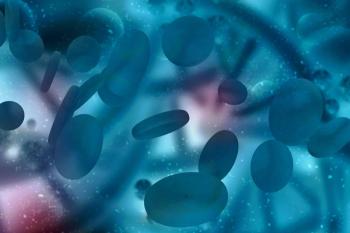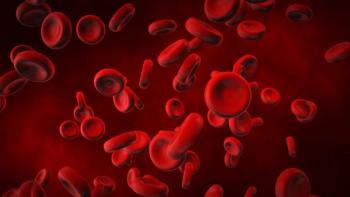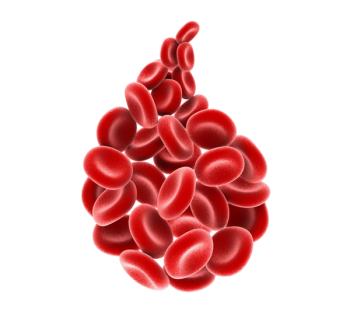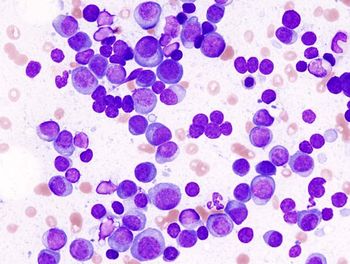
Pembrolizumab Yields Clinical Activity in Bladder Cancer Subtype
Pembrolizumab appears to achieve antitumor activity in terms of disease-free survival in patients with Bacillus calmette-guerin–unresponsive, papillary high–risk, non-muscle invasive bladder cancer.
Antitumor activity was observed following treatment with pembrolizumab (Keytruda) monotherapy for patients with Bacillus calmette-guerin–unresponsive, papillary high-risk, non–muscle-invasive bladder cancer (NMIBC), according to results from cohort B in the phase 2 KEYNOTE-057 trial (NCT02625961) presented at the
Cohort B of the phase 2 Keynote-057 trial evaluated the safety and efficacy of pembrolizumab monotherapy in patients with BCG-unresponsive high-risk NMIBC who were either ineligible for or declined to undergo radical cystectomy, according to a presentation from Andrea Necchi, MD, associate professor at Vita-Salute San Raffaele University and head of Genitourinary Medical Oncology at the San Raffaele Hospital in Milan, Italy.
Previously reported results from Cohort A of the trial, which evaluated the treatment in patients with carcinoma in situ (CIS) with or without papillary tumors, showed a clinical complete response rate of 40.6% at 3 months, along with a median duration of response of 16.2 months.2 This resulted in the FDA approving pembrolizumab for use in this patient population.
In his presentation, Necchi noted that although prior research has been conducted in patients with BCG-unresponsive CIS3, limited data exist regarding the use of novel systemic therapies in non-CIS, high-grade papillary T1 or Ta disease.3 Accordingly, cohort B of the Keynote-057 trial evaluated patients with papillary tumors only and no CIS.
Cohort B included patients who were at least 18 years of age with BCG-unresponsive high-risk NMIBC with papillary tumors only at baseline, with an ECOG performance status of 0-2. Participants received 200 mg pembrolizumab every 3 weeks for 35 or fewer cycles, or approximately 2 years. Twelve-month disease-free survival (DFS) served as the primary end point. Secondary efficacy end points included 12-month DFS of any disease; progression-free survival (PFS) to worsening of grade, stage, or death; PFS to muscle invasion, metastasis, or death; and overall survival (OS).
A total of 132 patients received pembrolizumab, 104 (78.8%) of whom were male. Median patient age was 72 years (range, 37-87). The median follow-up was 45.4 months (range, 14.9-77.1). Patients had received a median of 10 prior instillations of BCG (range, 6-33); tumor stage at entry was T1 in 57 patients (43%) and high-grade Ta in 75 patients (57%); and baseline high-risk NMIBC status was persistent in 35 patients (26%), recurrent in 79 patients (60%), and progressive in 18 patients (14%).
The 12-month DFS rate in high-risk NMIBC was 43.5% (95% CI, 34.9%-51.9%), and the median DFS was 7.7 months (95% CI, 5.5-13.6). The 12-month rate of any-disease DFS (defined as low-grade Ta, high-risk NMIBC, and progressive disease) was 41.7% (95% CI, 33.1%-50.0%), and the median was 6.0 months (95% CI, 4.3-12.0). The 12-month PFS rate to worsening of grade, stage, or death was 88.2% (95% CI, 80.0%-93.2%), with a median of 44.5 months (95% CI, 34.6-not available). The 12-month PFS rate to muscle invasion, metastasis, or death was 88.2% (95% CI, 79.4%-93.3%), with a median of 46.2 months (95% CI, 36.8-not available). The 12-month OS rate was 96.2% (95% CI, 91.1%-98.4%), and the median was not reached.
Regarding treatment-related adverse events (TEAEs), 97 patients (73.5%) experienced a TEAE. In addition, 19 (14.4%) experienced a grade 3 or 4 TEAE, 17 (12.9%) experienced a serious TEAE, and 14 (10.6%) discontinued treatment due to TEAE. There were no deaths from TEAEs.
“In conclusion, pembrolizumab monotherapy showed antitumor activity in terms of disease-free survival rate in patients with BCG-unresponsive papillary high-risk non–muscle invasive disease after almost 45 months of follow-up…These results are among the most robust data yet available for any novel systemic therapy in this patient population,” said Necchi.
References
- Necchi A, Roumiguié M, Esen AA, et al. Pembrolizumab (pembro) monotherapy for patients (pts) with high-risk non–muscle-invasive bladder cancer (HR NMIBC) unresponsive to bacillus Calmette–Guérin (BCG): Results from cohort B of the phase 2 KEYNOTE-057 trial. J Clin Oncol. 2023;41(suppl 60):LBA442. doi:10.1200/JCO.2023.41.6_suppl.LBA442
- Balar AV, Kamat AM, Kulkarni GS, et al. Pembrolizumab monotherapy for the treatment of high-risk non-muscle-invasive bladder cancer unresponsive to BCG (KEYNOTE-057): an open-label, single-arm, multicentre, phase 2 study. Lancet Oncol. 2021;22(7):919-930. doi:10.1016/S1470-2045(21)00147-9
- Boorjian SA, Alemozaffar M, Konety BR, et al. Intravesical nadofaragene firadenovec gene therapy for BCG-unresponsive non-muscle-invasive bladder cancer: a single-arm, open-label, repeat-dose clinical trial. Lancet Oncol. 2021;22(1):107-117. doi:10.1016/S1470-2045(20)30540-4
Newsletter
Stay up to date on recent advances in the multidisciplinary approach to cancer.

















































































